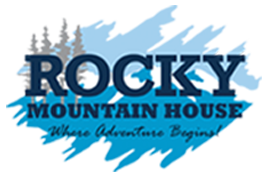Updated July 15, 2025
NEW Effective July 15, the Town of Rocky Mountain House will no longer charge off-site levies on new developments. These fees are traditionally collected from new developments to fund municipal infrastructure upgrades such as roads, water, and wastewater services. This decision was approved by Council following a review of economic conditions, an updated utilities master plan, feedback from the development community and careful deliberation of Council.
The Offsite Levies Repealing Bylaw was passed at the Regular Council Meeting on July 15, 2025.
A Utility Master Plan is an engineering study used to assess the capacity of Municipal utility systems such as water, wastewater, stormwater and transportation to identify upgrades required to accommodate community growth.
The Town of Rocky Mountain House has been working with Stantec and Corvus Business Advisors to review and update its Utilities Master Plan together with its Off-site Levy Bylaw.
Before considering a new bylaw, Rocky Mountain House Council sought feedback from landowners and developers about the suggested off-site levy rates, based on the revised Utility Master Plan:
Landowner/Developer Session held Wednesday, June 11 from 1 PM to 3 PM
Public Information Session held Wednesday, June 11 from 4 PM to 6 PM.
What is a Utility Master Plan?
A Utility Master Plan is an engineering study used to assess the capacity of Municipal utility systems such as water, wastewater, stormwater and transportation to identify upgrades required to accommodate community growth.
Why did the Town of Rocky Mountain House undertake a Utility Master Plan?
The Town’s last Utility Master Plan was completed 10 years ago. Since then, the Town has undertaken several significant infrastructure upgrades such as:
- 54 St. Extension
- New Wastewater Treatment Plant in progress
- Main Lift Station Number #1 where additional capacity was required to support the Creekside development.
- Water Treatment Plant upgrades
Since 2015, construction costs have increased, and the Town’s long-term growth projections have changed. In the interest of continuously improving our bylaws and asset management strategy, the Town undertook a comprehensive Utilities Master Plan in 2024. This new plan will be used to calculate off-site levies for new development, to ensure the Town and developers have clear expectations and understanding of responsibilities and the rational for them. The plan was approved by council, in principle, on April 8, 2025.
What were the findings of the Utility Master Plan?
The Utility Master Plan found that the Town’s infrastructure is well equipped to meet the projected growth of the next 25 years, with upgrades recommended to service new development areas.
What is an off-site levy?
An off-site levy is a funding tool used by municipalities to recover the capital costs for infrastructure needed to support growth. Off-site levies are imposed on developers to fund the infrastructure projects that support new developments.





How are off-site levies authorized and governed?
Off-site levies are enabled under Section 648 of the Municipal Government Act and governed through an off-site levy bylaw. The Town of Rock Mountain House repealed its Off-site levy bylaw on July 15, 2025.
What types of infrastructure can be funded by off-site levies?
Off-site levies can fund a range of capital infrastructure projects, including roads, water and wastewater systems, stormwater systems, and community facilities like fire halls, recreation centres, police stations and libraries.
Operating programs and costs cannot be funded via off-site levies.
Effective July 15, the Town of Rocky Mountain House no longer charges off-site levies on new developments.
How does the Town’s current off-site levy rates compare to similar-sized municipalities?
As of July 15, 2025, The Town of Rocky Mountain House no longer charges off-site levies on any new subdivision or development.
Here are some general comparisons from other municipalities that apply off-site levies for roads, water, wastewater and stormwater projects, based on 2023 or 2024 rates (most recent available):
| Town of Olds | $73,000/ha |
| Town of Sylvan Lake | $90,000/ha |
| Town of Devon | $160,000/ha |
| Town of Coaldale | $185,000/ha |
| Strathcona County | $391,000/ha |
| Town of Rocky Mountain House | $0.00/ha |
How often are off-site levy rates reviewed and updated?
Rates are reviewed and updated regularly, usually annually, as specified by a municipality’s bylaw or policy.
How are off-site levies used by municipalities?
In municipalities where off-site levies are collected, funds are placed in dedicated reserves and may be used only for the infrastructure types specified in the Municipal Government Act. Municipalities are accountable for ensuring appropriate use of the funds.
As of July 15, 2025, the Town of Rocky Mountain House no longer charges off-site levies on new developments.
Are off-site levies the same as development charges?
While the terms are sometimes used interchangeably, “off-site levies” specifically refer to charges for off-site infrastructure under Alberta’s Municipal Government Act. “Development charges” can also refer to other local fees and costs, such as fees for development permits and subdivision applications.
